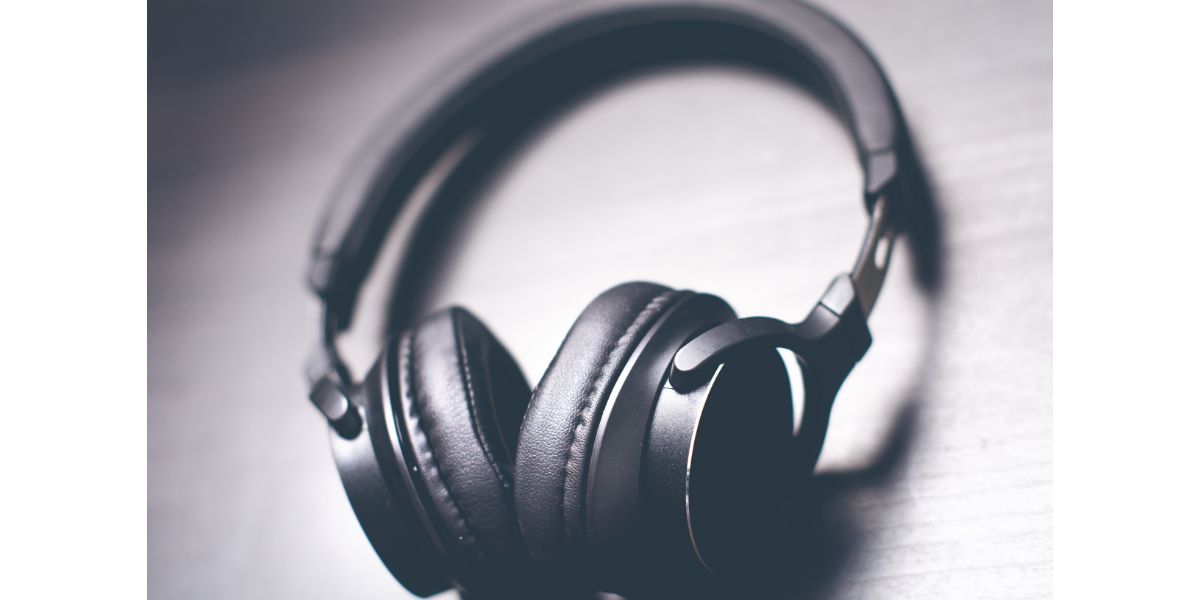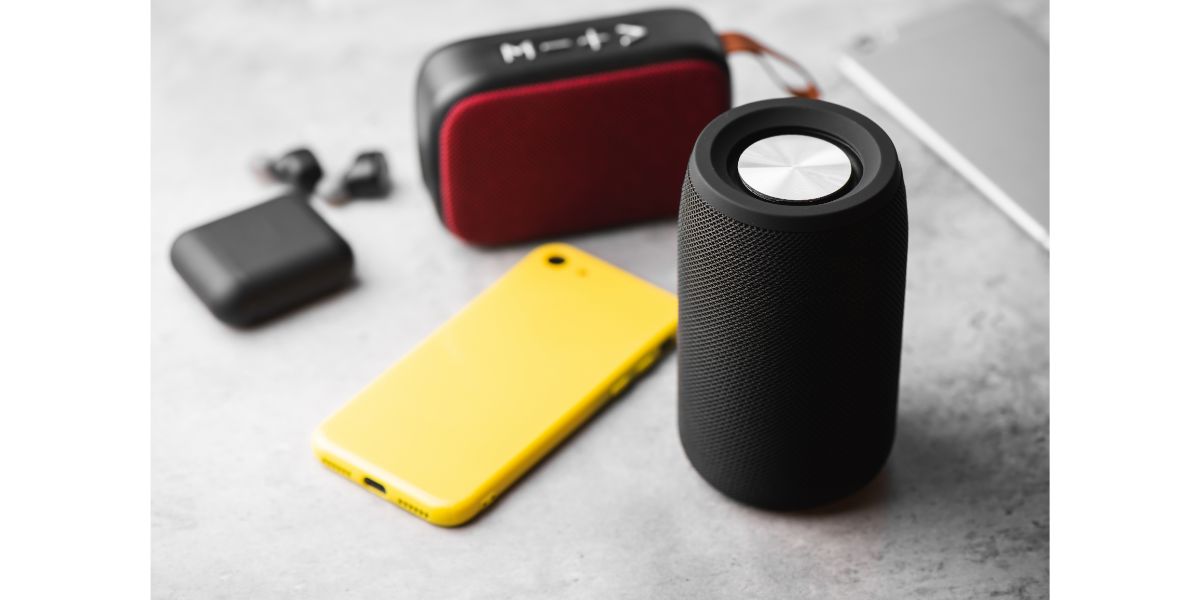Disclaimer: This post may contain affiliate links, meaning we get a small commission if you make a purchase through our links, at no cost to you. For more information, please visit our Disclaimer Page.
Bluetooth audio sounds bad because the transmitting device has too many Bluetooth devices connected, causing interference, and is running on low battery. Other potential causes include lossy compression, bad media player settings, and a poorly recorded soundtrack.
In this article, we’ll discuss common reasons why your Bluetooth audio sounds so bad and how to fix these issues, so read on!
Table of Contents
How Does Bluetooth Transmit Audio
Do you always get crappy, distorted audio from your Bluetooth devices? Does your music always start cutting out a few minutes after turning Bluetooth on? Or do your headphones produce unclear, muffled sounds that sound nothing like the original soundtrack while on Bluetooth?
Before we analyze the potential causes of bad-quality audio from your Bluetooth devices, it is important to recap how everything works together.
Every basic Bluetooth setup features two Bluetooth-enabled devices; one that sends data and one that receives it. The transfer happens wirelessly. To facilitate transmission over wireless distances, Bluetooth devices use communication protocols, which are rules laid out to help both devices communicate with each other.
Audio is transmitted through Bluetooth devices through the A2DP transmission profile, which facilitates the transfer of high-quality audio signals. This profile supports codecs, including SBC, LDAC, AptX, ATRAC, and others. The Bluetooth codec compresses and decompresses data transmitted over the Bluetooth network.
Bluetooth devices’ inability to compress and send data or receive and decompress data will all affect the sound quality.
Now that you have a little context about how Bluetooth devices communicate, we can move on to the reasons for poor Bluetooth audio.
Why You’re Not Receiving the Best Quality Audio
1. Transmitting Out of Range
Unlike long-range wireless and wired transmission, data transmitted via Bluetooth doesn’t travel very far.
Bluetooth is a short-range communication technology. As such, most Bluetooth devices can only transmit information wirelessly for distances no longer than 30 feet (9.1 meters). Moreover, any walls or obstructions between the two wireless devices reduce this distance.
Once the two wireless devices go further apart, the result is often choppy audio. That’s because the connection breaks when the two wireless devices go further apart. The choppy audio occurs as they try to re-establish the connection.
To fix this, keep the distance between your Bluetooth devices to a minimum. But what if you want to enjoy music away further away? If so, consider adding a repeater (or Bluetooth range extender) to your network to boost the range.
Small, compact, but low-cost repeaters like the Miccus Bluetooth Extender on Amazon.com have much to offer to boost the strength of your Bluetooth signal throughout your home. This little device can support up to 160 feet (48.7 meters) and up to 300 feet (91.4 meters) in a clear line of sight.
An ideal repeater can increase the range to over 150 feet (45.7 meters). On the downside, these devices fall victim to the same constraints affecting Bluetooth devices, such as wall thickness and other obstacles.
2. Low Battery
Bluetooth devices short-wavelength UHF radio waves to communicate. It takes a little energy to generate these waves in your Bluetooth devices.
However, when the battery gets depleted, your device lacks sufficient power to communicate with the other wireless device. Although it can still pair with the receiving device, its capacity to transmit data over the entire distance will be limited.
The simplest way to fix this problem is to keep your transmitting and receiving devices charged. Or, purchase long battery life devices that can store power for longer.
3. Headphone Sound Leakage
Sound is bound to leak out of your headphones, AirPods, or other listening devices if they don’t perfectly cover your ears.
For instance, low-frequency beats may not be 100% audible when your headphones are not tight around your ears. The design of the headphones also plays a part in leaking sound; open-back headphones leak more sound than closed-back headphones.
In the same way that sound leaks to the external environment, noise can still find its way into your hearing, which makes it more difficult to discern what you’re listening to. A good response to this issue is choosing audio devices that fit snuggly in or around your ears. Doing this will minimize the sound that leaks into and from the external environment.
4. Too Many Devices Connected to the Network
Too many devices on your Bluetooth network can cause interference. The interference, in turn, could lead to other issues such as static in your audio, buzzing sounds, latency, and in a worse scenario, an unstable connection that keeps cutting out.
You can easily fix this by disconnecting unnecessary devices on your network. Disconnect any TVs, controllers, headsets, speakers, and other Bluetooth that aren’t being used at the time to clear up more bandwidth.
Note: Bluetooth devices are backward compatible. Fortunately, you do not have to worry much about incompatibility so long as you have a Bluetooth-enabled device.
5. Bad Media Player Settings
Sometimes, low-quality audio has nothing to do with your Bluetooth devices but with your trusted media player settings. If you’re always tweaking your audio settings to get the best audio quality, it is possible that these settings are not balanced for your specific Bluetooth device.
The good news is that fixing this is not difficult. Simply adjust your EQ (equalizer) until you find the appropriate settings for your device. Remember, the more frequency bands your media software has, the better, as more bands offer granular control over the soundtrack.
6. Poor Quality Audio Track
If you’re an avid producer playing your pre-recorded music via Bluetooth, there’s a possibility that your equipment could be capturing poor-quality soundtracks resulting from the following.
- Poor mic placement
- Insufficient editing
- Compression with a low-standard format, such as MP3 and other lossy formats
For these reasons, I recommend checking your sources for such issues. Ensure a stable internet connection if you’re streaming audio from a streaming service, as poor connectivity can also lead to issues with sound quality.
7. Lossy Compression
When none of the solutions discussed in the previous sections work, you could face a much more complicated issue —compression.
When music is produced in its original format, it tends to take up too much storage space and must be trimmed down —or compressed— to take up less space on the storage device. Compression takes away essential data from the original music file, which means you’ll have a copy of the original without all the details.
Lower bit rates allow for more compression; however, the sound quality will take a toll as the codec algorithm shreds off more information from the audio file. Compression is also done to make the file smaller for easy transmission over the wireless network.
Lossy compression occurs when the codec algorithm shreds off the part of the audio file that the human ear is less likely to detect. This results in a smaller but lower-quality file with some missing information.
However, some codec algorithms allow lesser compression, which means more details, resulting in a higher-quality track.
Conclusion
Although Bluetooth offers convenience where wires and quarter-inch jacks couldn’t, it still has a long way to go in the quality audio department. If your devices often fall victim to crappy sound quality on Bluetooth, start with simple solutions like charging your device, updating drivers, and closing down unnecessary applications.


